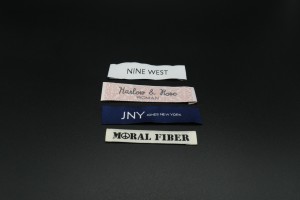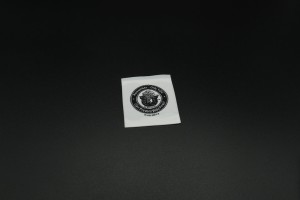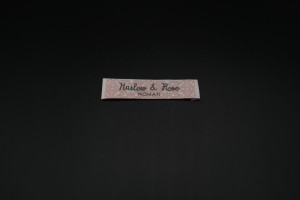At present, with the development of society, the company attaches great importance to the cultural education of clothing, and the clothing trademark is not only for the difference, but also to fully consider the company’s cultural heritage to spread to everyone.
Therefore, on many levels, the garment woven label logo becomes a form of expression of intangible asset amortization, which is also the cultural and artistic essence of a brand.
According to the application field, the garment woven labels mainly include: garment collar label, main label, side label, size label, origin label, pocket label, sleeve label, washing label, name label, case and handbag woven label, and bedding woven label, etc.
According to the processing technology category can also be divided into: burn side woven label, woven edge woven label, hook side woven label, plane woven label, forging surface woven label, wooden shuttle woven label, and pure cotton woven label.
Woven labels can be divided into two types: Woven Terylene Label and Woven Satin Label
Woven Terylene Label:
It’s one of the most popular labels. Woven on a loom with Polyester yarns, the terylene label is thin and soft and is offered in hundreds of different colors. There are two levels of damask woven labels: 100 denier and 50 denier. The 100 Denier terylene is the perfect combination of affordability and elegance, as this label offers a soft touch and intricate detail a notch below the 50 Denier. The 50 Denier yarn is, as you might have guessed, half of the size of the 100 Denier yarn and is perfect for higher detail labels. The finer weave of the 50 Denier allows for very precise and detailed labels with an extremely soft feel to the touch. 50 Denier are often found in luxury clothing and any brand that requires intricate detail.
Made of warp and weft interweaving. In addition to the doubling of weft to improve quality, there is also the doubling of warp, which is satin structure. By doubling the warp, the fabric becomes softer and smoother. Because the warp yarn is too dense after doubling, the weft can not express the pattern well, and the underside color can not be very flexible. Only the subsequent procedure can show certain color requirements. A machine designed to be flat or satin is usually relatively stationary. Trimmed satin should not exceed 10CM in width and selvage should not exceed 5.0cm in width.
Post time: Apr-13-2022







